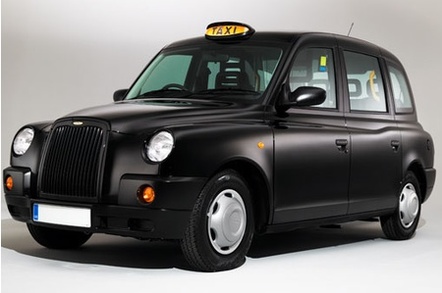



The Top Trends in Steam Baths and Showers Today Dec 18, 2024


How to Keep an Active Lifestyle for Seniors Dec 11, 2024


The Restaurant That Sued Its Customers: The Reputation Fallout from a Legal Battle Over Yelp Reviews

The Restaurant That Sued Its Customers: The Reputation Fallout from a Legal Battle Over Yelp Reviews Nov 29, 2024

The Black Cab: A History
May 16, 2019 20:51
As British as fish and chips, the black cab has become synonymous with the UK. Most associated with London, whose cabbies are world famous, the black cab can also be found across the country.
Some of us are probably guilty of calling them black cabs even when they’re not. However, a little-known fact is that they don’t actually have to be black. In fact, they can be red, white, blue or yellow.

Existing on our streets for longer than anyone cares to remember, you can buy these from a number of places such as Cab Direct. In fact, recently it’s been reported that electric black cabs are starting to pop up, but there’s a long backstory that’s led us to this point in black cab history.
Let us take you on a little journey.
The Beginning
Starting their life in the capital, which is why they’ve become so associated with the area, black cabs were originally known as hackneys.
This was due to the Norman French word ‘hacquenee’, which referred to a horse that was available to hire. Because, as you may have guessed, cabs started life as a coach being pulled by a team of horses – which started life during the mid-1600s.
This then led to the first taxi rank coming into existence in 1634. The carts eventually became smaller and were pulled by one horse by the early 1800s.
Getting Electric
Just before the start of the 20th-century, the first motorised taxis were introduced.
Nicknamed ‘Berseys’ after Walter C. Bersey, who designed them, these were powered by electric and first hit the roads of London in 1897. Although only 50 were first introduced, they were actually taken off the roads the following year for being too costly and too unreliable.
Three years later, petrol taxis were finally introduced after being imported from France. However, they weren’t officially known as taxis until 1906.
These then went on to become the famous cabs that we know and love today. However, they almost fell into ruin several times. The first time was during industrial action in 1911, the second was following a fuel shortage in 1913 and the third and fourth times occurred after the outbreak of the First and Second World Wars.
But, despite this, the persisted and have dominated our roads ever since.
Why Black?
As mentioned above, black cabs don’t necessarily need to be black, but this is the colour we’ve all come to know and love. But how did that come about?
There’s a very simple explanation for this. When the first lot of taxis were made, they had specific proportions and were made in black. Since then, this became the norm for any company making taxis, and so began our affinity with the now world-famous black cab.

In a world flooded with fast fashion and trend-chasing designs, one Arab brand dares to slow down and look deeper — into memory, into meaning, and into the eyes of a mother.SeeMe, a luxury fashion and accessories brand based in Amman, Jordan, is not just another name in the fashion scene. It’s a personal, artistic journey born out of love, grief, and identity — a brand that literally sees you. Read more

Let’s get one thing straight—sarees are never going out of style. What does evolve, though? The drape. From grandmom-core to fashion-week realness, diff styles of saree draping are having a moment (again). Whether you're learning to pleat from YouTube or remixing the pallu with boots and a belt, this six-yard stunner continues to be the ultimate canvas of expression. Read more

Is your anniversary on the horizon? It’s undoubtedly a memorable occasion that you should celebrate grandly. You don’t always have to go the whole hog; sometimes a cute gesture such as flowers, a handwritten note, and even a delicious anniversary cake works wonders. But how do you choose the perfect cake to delight him/her on the big day? Here are some choices worth considering in this case. Read more
LIFESTYLE
Mar 19, 2025 21:34
Copyright © Fooyoh.com. All rights reserved. User Agreement | Privacy Policy | Contact us
| Advertising
| About us
| Careers

















































